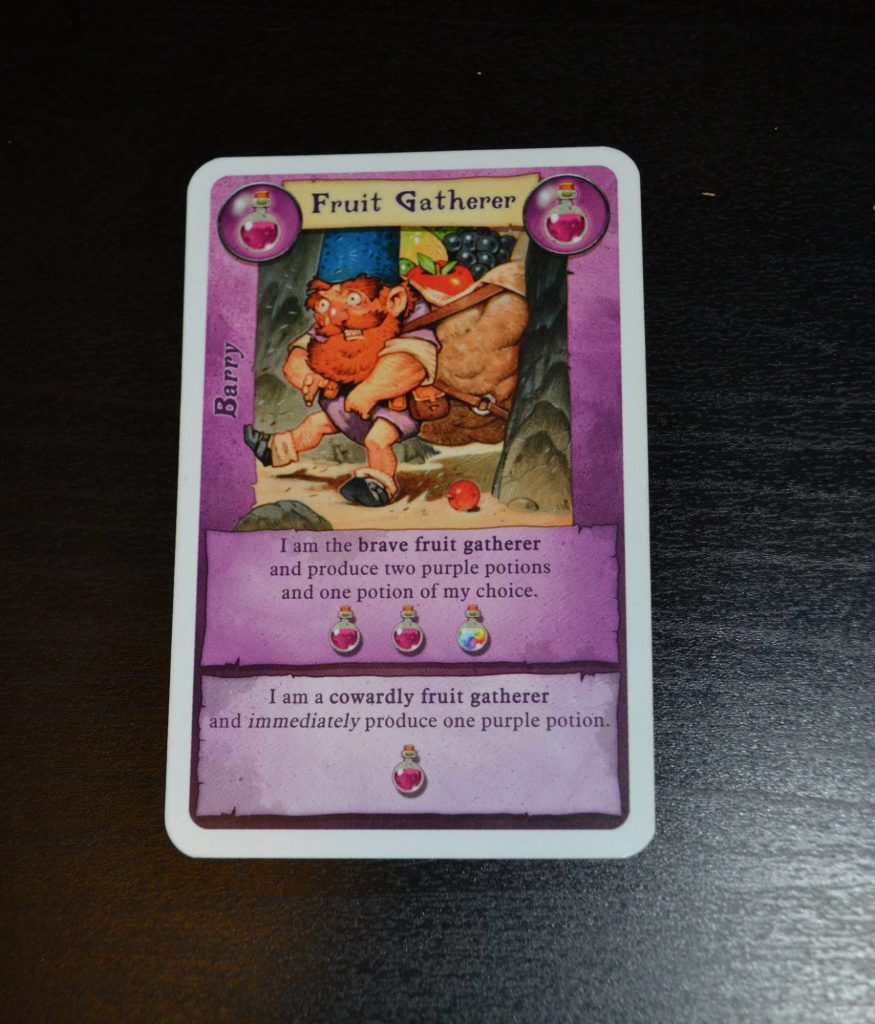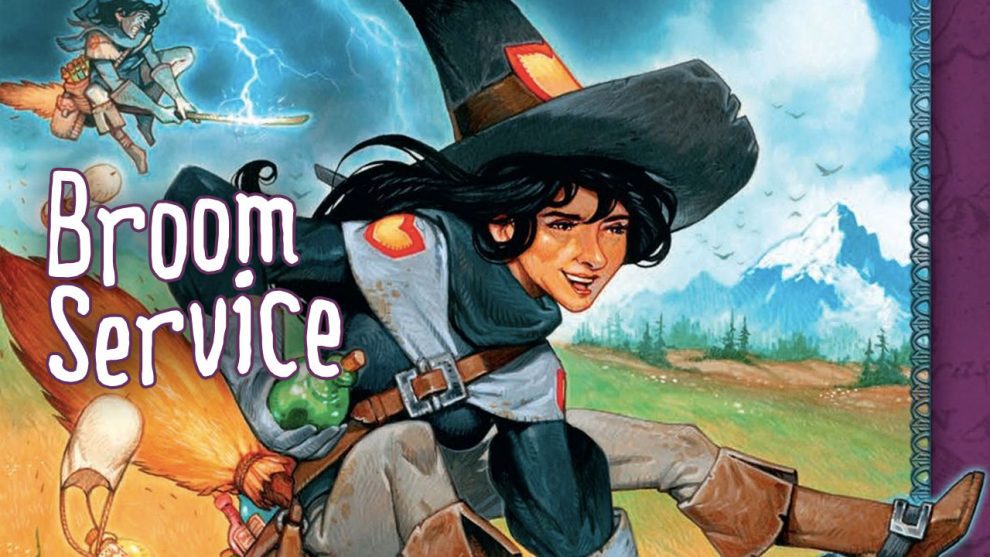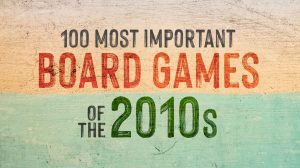Introduction, or: A Brief History of Wizardry
From his top 10 hit Great Western Trail to his upset Kennerspiel des Jahres award winner Isle of Skye, Alexander Pfister has become a well-respected creator in the world of board games.

In 2015, Pfister would see his first Kennerspiel des Jahres award with Broom Service– a game co-designed with Andreas Pelikan. Broom Service, a board game adaptation of Pelikan’s 2008 card game Witches Brew, bears many of the same mechanics. After its release, Broom Service would later be transmuted back into card form with 2016’s Broom Service: The Card Game. But let’s put the crystal ball away — it’s time to take a good look at the game.
A Dash of Rules
Broom Service is a highly interactive role selection game. Players act as witches, druids, and potion gatherers, all scrambling to deliver potions to towers dotted across the board. While Broom Service looks like a board game, 90% of the gameplay comes down to the identical decks of 10 cards held by each player.

Witch cards let players move their pawns, hoping to reach high-value towers and earn big points for delivering their potions. Potion gatherers let players gather different colours of potions. Druids deliver these potions– but only if one of your two pawns is near a tower that matches your potion’s colour.

These rules alone wouldn’t make Broom Service as exciting, as tense as it is. It’s how the cards are played that casts a kind of spell.
Where the Magic Happens
Everyone’s working with the same deck of 10 cards. At the start of every round, you secretly choose four of these cards as your hand. These are the only cards you’ll get to play. If you take a closer look, you’ll notice that each card has two different options– “brave” and “cowardly”. Players get to choose which one they’re using when they play the card.

You might notice from the above example– the brave option is straight-up better than the cowardly equivalent. So why would anyone ever choose cowardly? To answer that, we need to take a closer look at what happens when a card is played.
- The active player chooses one of their four cards. They play it, declaring brave or cowardly– “I am the brave fruit gatherer!” If they chose cowardly, they do their action… no risk, low reward. If they chose “brave”, they wait.
- The next player clockwise must play the same card if they have it. Now they declare– brave, or cowardly! Same process. (If they don’t have the card, they pass.)
- Play continues around the circle, with everyone revealing whether or not they chose the card.
- Only the last player clockwise who said “brave” actually gets to perform the brave action. Everyone else who declared “brave” has wasted their turn.

And this is what makes Broom Service so exciting. Players are constantly biting their nails, wondering if it’s safe to play a card bravely… or if they’ll be thwarted by a friend who had the same dreams. The whole game is a balancing act, and you’re all tightrope walkers poking at each other.
There’s something about a game that drapes itself so fully in player interaction. Since the game has very little randomness, every thrilling moment is a direct product of the people at the table. I didn’t get screwed out of that delivery by dice. It was all your fault! For those who are always trying to get ahead of their friends, always predicting their next move– for those people, Broom Service is a dream.
On the other hand, players who just want to quietly do their own thing will not find what they’re looking for here. In a game of Ticket to Ride, a good friend once told me she likes “when everybody gets to put their trains down”. For those like her, Broom Service would be an exercise in frustration. Toil and trouble indeed.

Closing the Spellbook
I don’t have enough good things to say about Broom Service. It’s not often you find a game that keeps players constantly engaged not just with the board but with each other. For what seems to be an innocuous, brightly-coloured storybook of a game, it elicits all kinds of reactions — joy and laughter to be sure, but a fair amount of righteous vengeance, too. It’s not unusual to hear a cry of “NO. I AM THE BRAVE FRUIT GATHERER!” thundering across the room.
With its gorgeous fairy tale art and approachable ruleset, Broom Service offers a comfortable hour of scheming and side-eyes. It even manages to offer a fun experience at any count from 2 to 5 players– a fact that I very much doubted the first time I saw “A great 2-player game!” scrawled across the box. But somehow, it just works.
As you can see, this is as much of a love letter as a review. I’ve played Broom Service dozens of times, and facilitated dozens more. It is with my most flamboyant wave of my wizarding wand that I grant Broom Service my highest recommendation.












Add Comment